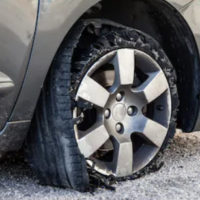Tire Failure By the Numbers

How do you calculate whether or not tire failure contributed to an accident? Do you consider the instances where tire failure was the primary cause? Do you include instances where tire failure was one cause among many? Do you include accidents where tire failure was present but the cause of the accident could not be determined to a scientific certainty?
Questions like these haunt the realm of statistics. How do we know how many Americans are killed each year by defective tires? How do we eliminate those situations in which the owner of the car may have themselves contributed to the crash by not properly servicing their tires?
When a tire-related death makes its way into the courts all of those facts are disputed. The plaintiff’s attorney will claim that the tire failed due to either a manufacturing or design defect while the defendant, the tire manufacturer will claim that some other facture, including driver negligence, resulted in the tire problem.
In court, the jury decides who is right and who is wrong, but there is a litmus that must be passed. In this case, who decides which cases rise to the standard of inclusion in the “official” government statistics? The answer to that question is the NHTSA.
The NHTSA 2012 Report
In 2012, the NHTSA issued a report in which it discussed some of the major factors in serious car accidents. In the report, the analysis noted any of a number of factors that could contribute to tire failure in a car accident. These included elements like driver inexperience, climatic conditions, road conditions, and more. They divided these factors into three groups: Vehicle factors, driver factors, and environmental factors. You’ll notice that one of the factors not included was the tire itself. You have no factor for that, apparently.
Vehicle factors included the tire pressure, the presence of a tire pressure monitoring system, the tread depth, the vehicle’s body tire, and whether or not there was damage caused by a prior event. Here, you can see what happened. The tire was rolled into (so to speak) the factors that were categorized with the overall vehicle.
By and large, the report seemed to indicate that in cases where a tire was responsible for an accident, the tire fell within ranges that were considered unsafe for tread depth and inflation. That being said, there were more than 40,000 cases of tire failure when the tire was in the ideal range with over 100,000 instances of tire crashes in which the treads were practically new.
It leaves many wondering if the NHTSA isn’t just a protectionist organization rubber-stamping the big businesses that supply presidential candidates with millions of dollars in donations each year. Or, if the NHTSA is an underfunded toothless agency with little to no power to hold companies to task when they fail American consumers.
Talk to a Tire Litigation Attorney Today
If a tire blowout has caused you injury, the Coral Gables tire defect attorneys at Halpern, Santos & Pinkert can investigate the situation and determine if a manufacturing defect is to blame for the accident. Call us today to set up a free consultation.
Resource:
safetyresearch.net/blog/articles/nhtsa-gets-real-tire-fatalities
crashstats.nhtsa.dot.gov/Api/Public/ViewPublication/811617
https://www.tiredefectattorney.com/recent-injury-highlights-flying-tire-accidents/
